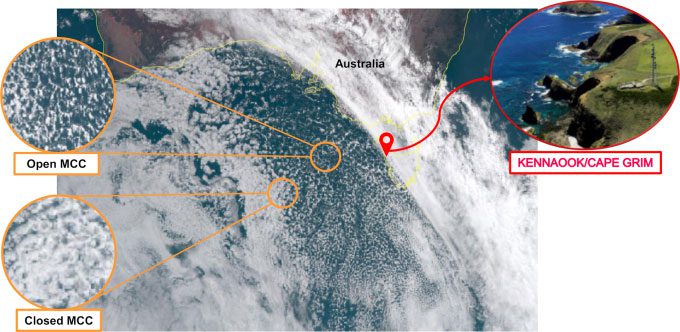The Southern Ocean boasts pristine air quality with very few aerosols—tiny particulate matter formed naturally or through human activities.
The Southern Ocean is located far from human activity, but this is not the only reason it has the cleanest air in the world, as reported by Science Alert on April 14th. In a recently published study in the journal Nature, a team of experts from Monash University and the University of Melbourne uncovered new information about cloud structure that highlights the significant role the Southern Ocean and its unique honeycomb-like clouds play in climate regulation. They also discovered the crucial role of clouds and rain in cleansing the air.

Open honeycomb clouds (circled above) and closed honeycomb clouds (circled below) in the Southern Ocean. (Photo: Tahereh Alinejadtabrizi/npj Climate and Atmospheric Science)
These honeycomb clouds can either have a closed-cell structure—a type of bright, white cloud that reflects sunlight back into space, cooling the Earth—or an open structure, which allows more sunlight to reach the Earth’s surface. “These complex formations are a source of error in modeling Earth’s climate because they are not properly accounted for. It is vital to achieve a reasonable balance between open and closed cells; otherwise, the results could be inaccurate,” the research team stated.
The experts believe they have identified a reasonable balance and gained a better understanding of the role of rainfall in cleansing the air. Using satellite imagery, they compared honeycomb clouds with aerosol measurements from the Kennaook/Cape Grim Observatory and rainfall data from nearby gauges, finding that the cleanest air samples are associated with the presence of open honeycomb clouds.
Open honeycomb clouds contain significantly more moisture—about six times more than closed-cell white clouds. From satellite views, they may seem to make the sky look less cloudy, but they actually contribute to the most effective rainfall, washing away aerosols. In contrast, closed-cell clouds may appear thicker but are less effective.
Open honeycomb clouds are most commonly observed in winter, resulting in the cleanest air during that season. In addition to the Southern Ocean, this type of cloud also appears in the North Atlantic and North Pacific during winter.
Although aerosol density in the air above the Southern Ocean is influenced by many factors, rainfall remains the dominant factor. “Rainfall is key, especially rain from these open honeycomb clouds. Rain cleanses the aerosol particles in the sky just as a washing machine cleans clothes,” the research team noted.


















































